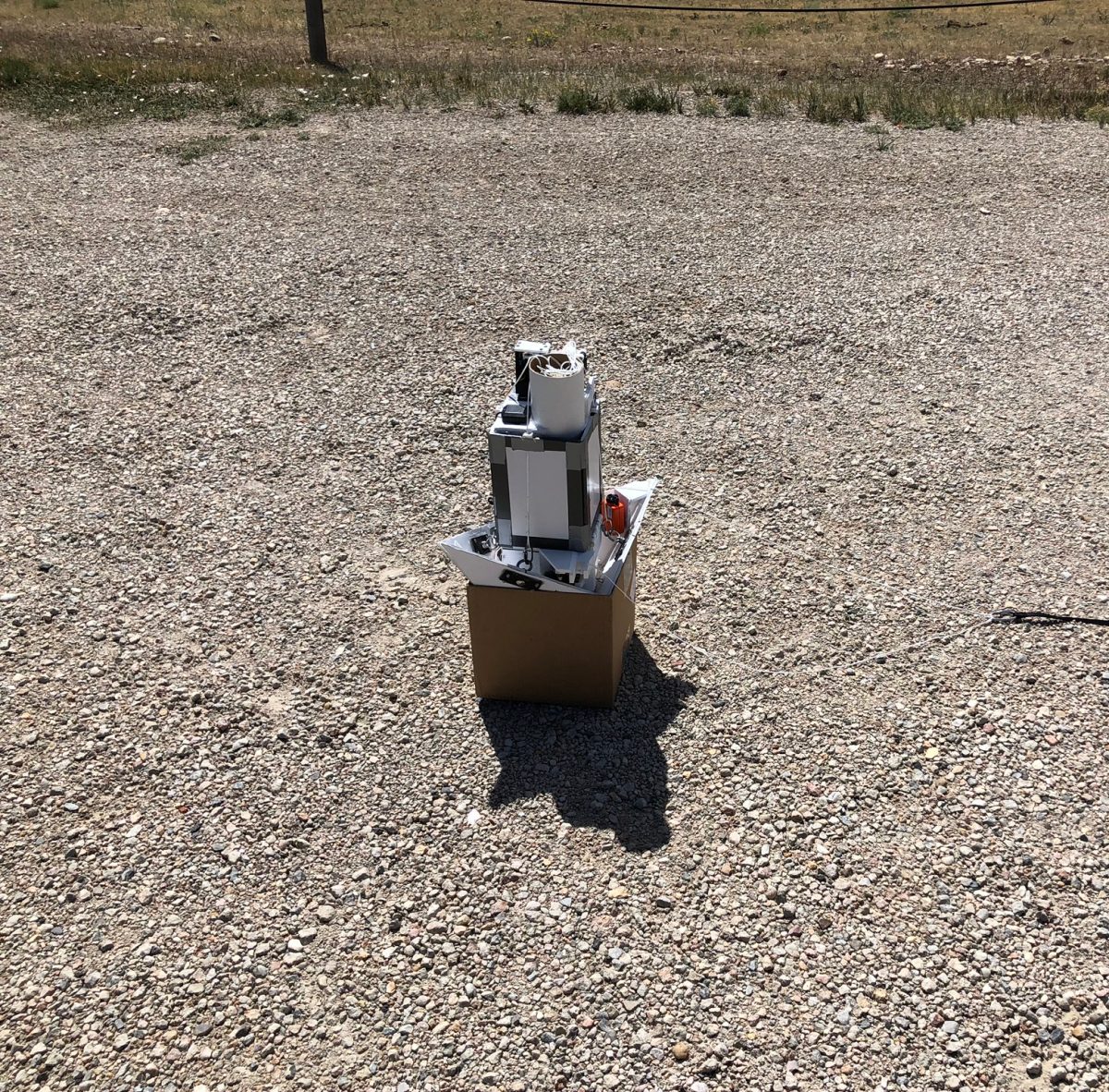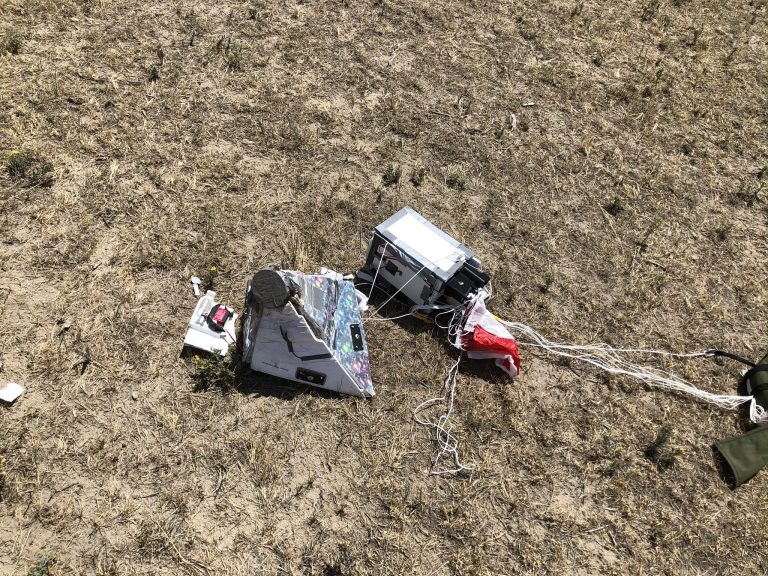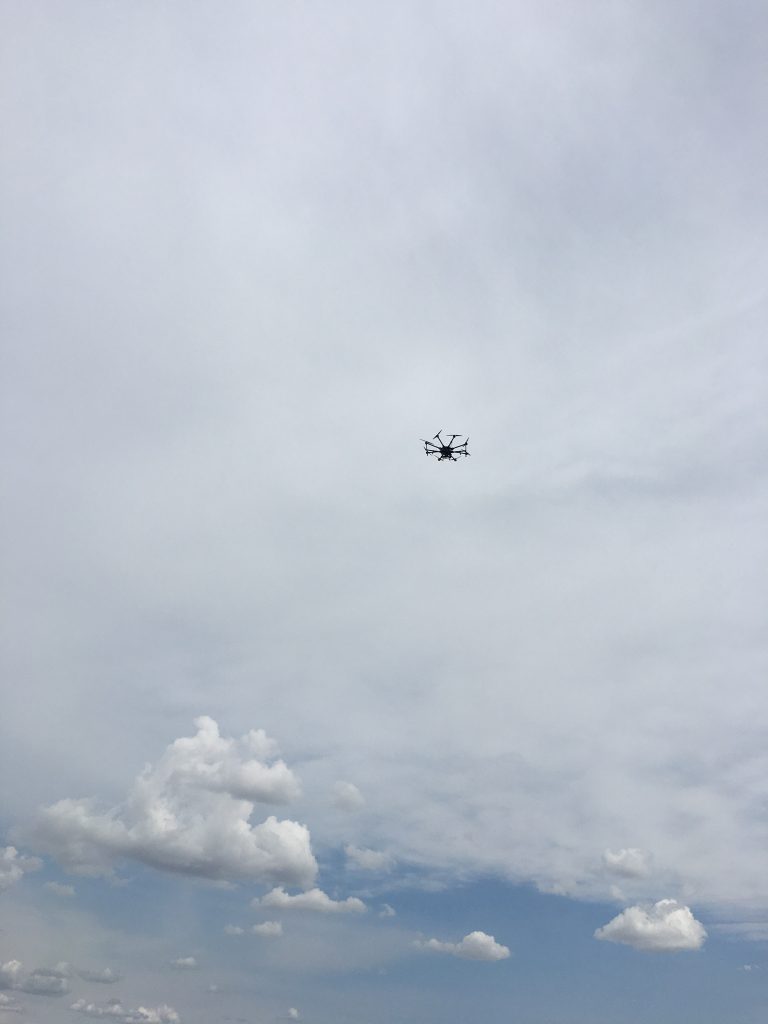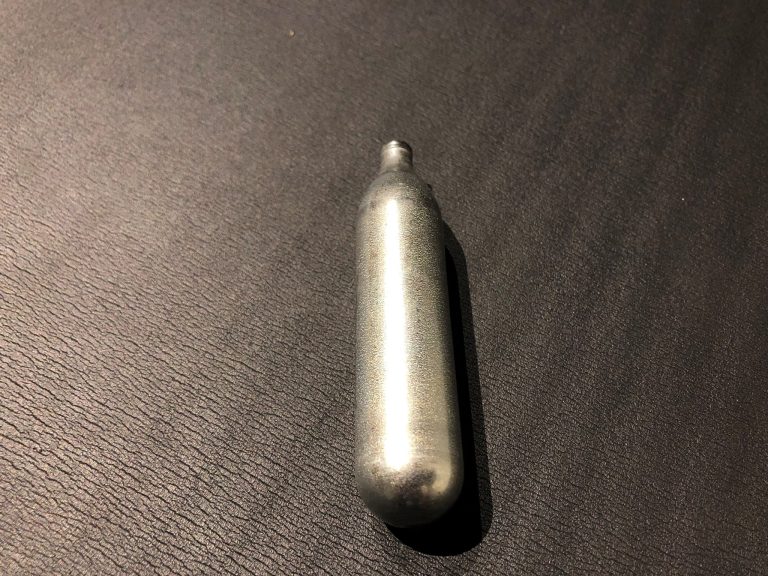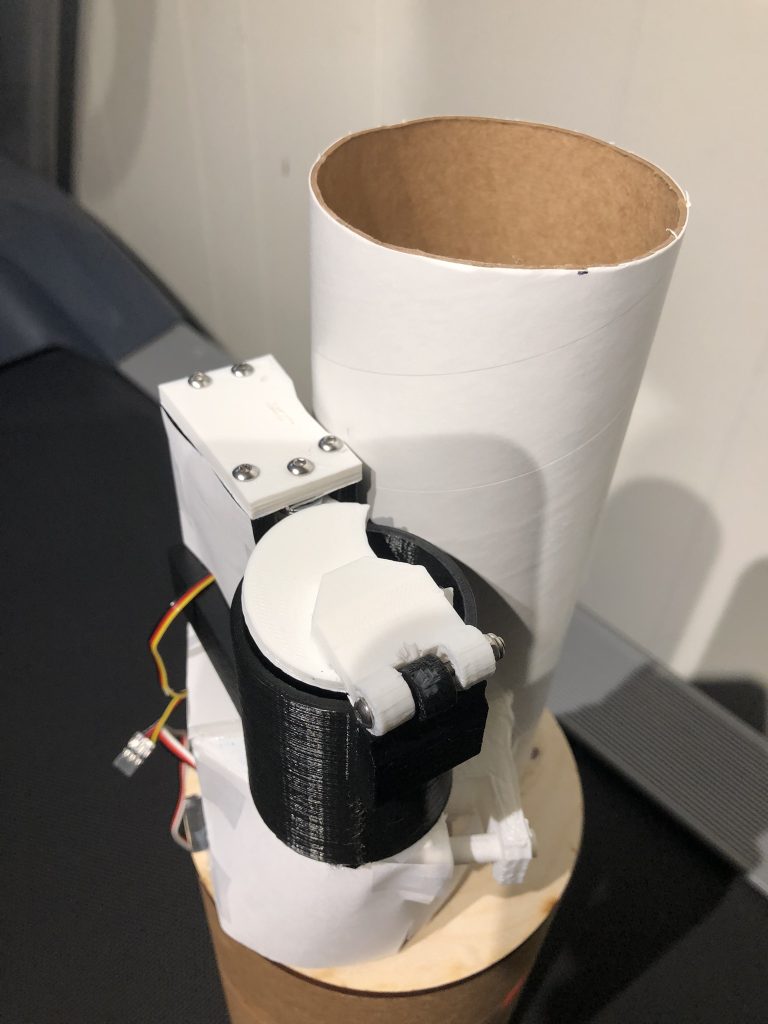Altimeter
Development of the PSCC code that would automatically deploy the parachutes proved much easier than expected. Only a few days after the GPS issue was solved, this code was ready for testing. Functionally, this version of the PSCC code is simple and functions as follows: During operation the code takes altitude readings from the PSCC’s air pressure and GPS sensors, which are compared to each other to confirm their accuracy and then checked against a preset drop altitude. Should the altitude value be lower then this value, it will deploy the parachute. To prevent the parachute from deploying during the payloads accent, when it will be starting at an altitude of 0 and climbing, the PSCC is started in a disarmed state, and is armed when it is lifted to a sufficient height. The prevents an early deployment by only deploying the parachute after the system is armed.
The actual testing of this code proved to be more challenging than usual, as it could not be tested on the ground but instead required FTS flights to reach the altitude to test it. After mounting the PSCC to the PTP we set off to the test site. We planned to perform two tests of the PSCC. The first test would lift the PTP ~300 ft into the air, hover briefly and then descend and land with the PTP still attached. During this test, instead of being connected to the parachute system, the PSCC would be connected to a small indicator, that it would drop. This would allow us to simulate a parachute deployment without risking the PTP by relying on an untested PSCC. The second test would be a full drop test, similar to the one that flight tested the parachute system. Much of the test would follow the same format, with the FTS lifting the PTP into the air and then dropping it, where it would then deploy the parachute. The difference would come in the method of triggering the parachute system, as where Test 11’s parachute system was triggered by an operator on the ground, this time, it would be triggered automatically by the PSCC.
Setup at the test site went smoothly and we were able to start our first test soon after we arrived.
Unfortunately this test did not go as planned. As seen in the video above, the indicator failed to drop, suggesting that something had gone wrong with the PSCC or the code it was running. After recovering the payload and analyzing the data it recorded, a likely cause was identified, there was an inaccuracy in the altitude values set before flight. While this issue would have likely been easy to fix, another occurred that proved not to be. While disassembling part of the PTP so we could recover the data collected during the flight, the GPS antenna connector broke. This prevented the GPS from connecting to the antenna and thus getting a good signal. As we were at the test site with only minimal equipment we were unable to fix this problem and had to cancel further testing.

